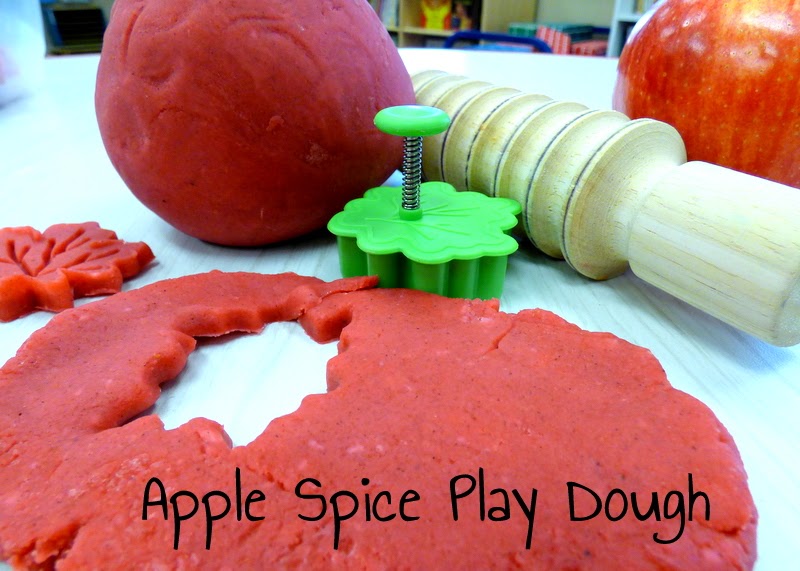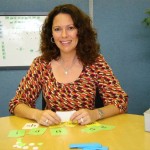
by PRIDE Reading Program Admin | Oct 3, 2015 | A PRIDE Post, Dyslexia
Dyslexia Facts
Dyslexia is a language-based learning disability and one of the most common causes of reading difficulties in elementary school children.
Approximately 1 out of every 5 children in the United States struggles with dyslexia!
Some problems displayed by students with dyslexia involve:
- Learning to speak
- Organizing written and spoken language
- Learning letters and their sounds
- Memorizing number facts
- Spelling
- Reading
- Learning a foreign language
Dyslexia is a life-long condition. With the proper help and early intervention, students with dyslexia can learn to read and write. Most children with dyslexia will need extra help from a teacher, tutor, or therapist specially trained in using a multisensory, structured language approach.
Multisensory teaching
The most effective teaching method for children with dyslexia is a multisensory approach. Multisensory teaching utilizes all the senses to relay information to the students. The teacher accesses the auditory, visual, and kinesthetic pathways in order to enhance memory and learning. For example, when learning the vowel combination “oa” the student might first look at it and then have to trace the letters in the air while speaking out loud. This combination of listening, looking, and moving around creates a lasting impression for the student as things will connect to each other and become memorable. Some other multisensory activities are:
- Fill an empty cookie sheet with flour or rice and let the child trace letters with their fingers. Shake the tin to start over.
- Fill a large resealable see-through bag with shaving foam. Close it tight and let the child use his or her finger to make letters in the foam.
- Make tactile letters – use glue to stencil letters onto paper or cardboard and cover them with sand or glitter.
- Make alphabet cookies using letter-shaped cookie cutters, or use the cookie cutters with play dough.
- Incorporate fun activities into the learning time. Games and other creative activities get the dyslexic child more involved in the learning process and it gives them a sense of accomplishment.
- Act it out! Dyslexic children are often very good actors and this gives them an opportunity to verbally express their knowledge and “shine.”
- Use objects and manipulatives when teaching. Dyslexics like to feel and touch the concept being taught. This could be as simple as a note card that they hold while reading out loud.
Time
Dyslexic students often struggle with focus and attention. They are easily distracted and often have a hard time listening to a long lecture or watching a long video. Dyslexic children may also struggle with short-term memory deficits, making it difficult to take notes or understand simple instructions.
- Go slowly. Do not rush through a lesson. Give the student time to copy anything written on the board (or remind them to take a picture with a phone). Make sure the dyslexic student understands you before moving forward to the next concept.
- Repeat yourself a lot. Dyslexics often struggle with short-term memory deficits; it is difficult for them to remember everything you said. Repeat instructions, keywords, and concepts so students are more likely to remember what you say, or have time to write it down.
- Give them short breaks often. Sitting and focusing for long periods of time is very difficult for dyslexic children. Move around from activity to activity.
- Give the dyslexic child more time. It takes dyslexic children longer to complete assignments other students may have no problem completing. Allow the dyslexic student more time to take exams and quizzes and to complete homework so they do not feel rushed.
- Time to process what he has heard
Handouts
Due to short-term memory deficits in dyslexic students, providing them with visual handouts is extremely beneficial to them.
- Use outlines for lectures
- Have the homework written on the whiteboard daily and remind them at the beginning or end of each class period to take a picture of it on their phones
- Use visual cues, such as asterisks and bullets to highlight important directives or information
- Have reference guides, multiplication charts, alphabet and number lines handy for them to use
Learn more about the New PRIDE Reading Program
___________________________________________________________________________
Karina Richland, M.A. is the Founder and Director of PRIDE Learning Centers, located in Los Angeles and Orange County. Ms. Richland is a certified reading and learning disability specialist. Ms. Richland speaks frequently to parents, teachers, and professionals on learning differences, and writes for several journals and publications. You can reach her by email at karina@pridelearningcenter.com or visit the PRIDE Learning Center website at: www.pridelearningcenter.com

by PRIDE Reading Program Admin | Sep 27, 2015 | A PRIDE Post, Dyslexia
October is National Dyslexia Awareness Month and PRIDE Learning Center will help raise awareness for dyslexia by offering FREE reading assessments throughout the month.
“One out of every ten children has some form of dyslexia,” says Karina Richland, owner of the dyslexia reading centers. “Reading and writing are very difficult for children with dyslexia and these really smart kids end up struggling so much in school.”
PRIDE Learning Center teaches kids with dyslexia how to read and write using a multisensory system called the Orton-Gillingham approach. It is an intensive one-on-one reading program that stresses teaching the entire structure of written English through systemized teaching of letters and their corresponding sounds.
“Most parents don’t even know this type of teaching exists,” says Richland. “This isn’t a brand new program either, the Orton-Gillingham approach to reading has been around since the 1940’s. It is amazing how structured and repetitious it is. Our kids reading skills improve 100% when they come here. It is hard work but we make it really fun and the kids just love coming here.”
Throughout the month of October, parents can bring their children into any local PRIDE Learning Center for a free assessment that will measure their reading abilities. PRIDE Learning Center has locations in Newport Beach, Mission Viejo and San Clemente. To schedule an appointment contact PRIDE Learning Center at 866-774-3342 or visit the website at www.pridelearningcenter.com.

by PRIDE Reading Program Admin | Sep 21, 2015 | Articles & Resources
As the season turns to fall – it is the perfect time to bake an apple pie. Or better yet, mix up a batch of apple pie play dough, because it smells just as good as apple pie!
This recipe is so smooth and silky and smells delicious!
Here is the recipe:
2 cups baking soda
1 cup corn flour
1 ½ cups water
1 Table Spoon vegetable oil
Food Coloring (red or green )
1 Tablespoon cinnamon and 1 Tablesoon All Spice
- Add all the above ingredients into a pot except for the spices
- Stir well
- Put it onto the stove and cook until it turns into a thick mush – and becomes really hard to stir.
- It will be a bit sticky
- Set the dough aside for a few minutes and knead when cool enough to touch
- Now you can add the yummy spices to the dough – and knead it further
Happy Playing!
The play dough can be stored in a plastic zip lock bag in the fridge

by PRIDE Reading Program Admin | Aug 31, 2015 | Tutoring & Remediation
PRIDE Learning Center now offers in-home tutoring! Our staff is available to go to your home and deliver one-on-one reading, writing and comprehension instruction to your child.
We provide you with highly qualified Reading Specialists in the comfort of your home, at a time that’s convenient for you and your family. Tutoring sessions may also be scheduled at schools, after school facilities, libraries, or community centers.
At PRIDE Learning Center, we understand that your time is in short supply, so we make every effort to accommodate your schedule.
We incorporate all aspects of our learning center services including pre and post assessments, progress monitoring, rewards and motivation tools, quality instruction and support.
- Orton-Gillingham trained staff in-home
- One-on-one instruction
- Student needs assessment
- Personalized learning
Our Orton-Gillingham multi-sensory teaching style is action oriented and involves constant interaction between our Reading Specialist and your child. For children with reading disabilities, our specialists are trained to reach every student – especially those with dyslexia, auditory and visual processing disorder, speech delays, processing difficulties, ADHD and other learning differences.
For more information email us at info@pridelearningcenter.com or call PRIDE Learning Center TODAY and start your child on the path to success:
Toll Free: 866-774-3342

by PRIDE Reading Program Admin | Jun 16, 2015 | A PRIDE Post, Reading Comprehension
For some children, reading comprehension help is just a frustrating, pointless exercise of reading words on a page. How can we help our children to become active, engaged and competent readers? This is not something that comes naturally to most children. It is something that needs to be taught and practiced. Here are a few strategies and techniques parents might use with their children for reading comprehension help.
Build Background Knowledge
The first step in reading comprehension help is connecting the child with the text. Before reading a text help the child build background knowledge. If the text is about the Himalayan Mountains, consider showing the child a visual representation of the terrain, landscape, etc. Ask them about the similarities and differences between the pictures they see and their own city and town. Building this background with information is critical in helping the children visualize what they are reading while they are reading it.
Teach the Student to Visualize as they Read
The next step in reading comprehension help is learning to visualize. During the reading, stop and ask the child questions relating to the reading. Ask them what did they see while they were reading and what did it look like, sound like, etc. By asking questions during the reading, you are giving the child a purpose for reading as well as focusing his or her attention on what they are reading.
Use Graphic Organizers
Another important element in reading comprehension help is using a multi-sensory approach. During the reading, have the child use a graphic organizer to help set the visualization of the text. For example, they could compare two characters from the story and decide how they are similar and different using their organizer. This keeps the child engaged and active, as well as gives them a purpose as they are reading through the text.
Discuss the Reading both Verbally and Written
Once the reading is complete, it is important for the parent to monitor the child to determine whether reinforcement is necessary. This can be accomplished through a variety of different activities – both orally and written.
• Create a story map with the child. Draw a vertical diagram with spaces for the child to fill in the names of the main characters, the story’s setting, and the main problem in the story, a few events, the resolution and the ending.
• Have the child retell the story or text in their own words.
• Write the words Who, What, Where, When, Why, and How on chart paper. Have the child answer these questions as they pertain to the story.
• Ask the child to draw parallels to what they have just read, and something they have read in the past.
A strong reader is not just someone who can read anything, read it fast and read it well. A strong reader is engaged and active in the reading. This reader therefore comprehends the text in many various skill levels. This is not something that usually comes naturally; this is something that needs to be taught. Motivate and guide your children through comprehension, make it fun, and make it lasting.
Learn more about the New PRIDE Reading Program
________________________________________________________________________________________________________________________

Karina Richland, M.A. is the Founder of PRIDE Learning Centers, located in Los Angeles and Orange County. Ms. Richland is a certified reading and learning disability specialist. Ms. Richland speaks frequently to parents, teachers, and professionals on learning differences, and writes for several journals and publications. You can visit the PRIDE Learning Center website at: www.pridelearningcenter.com
Page 18 of 35« First«...10...1617181920...30...»Last » 





